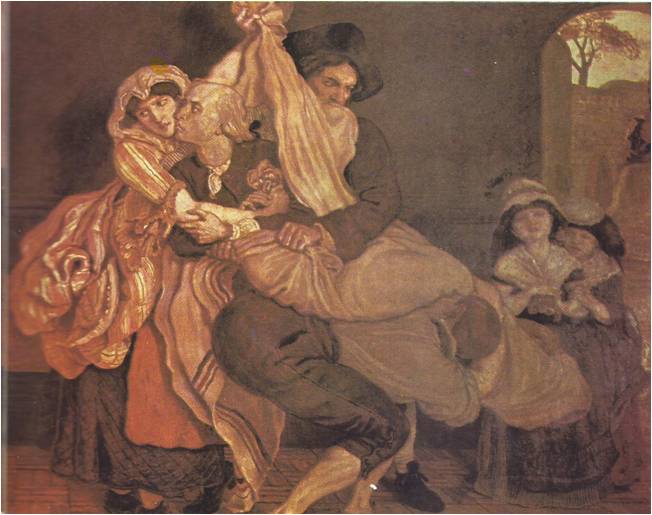FEAR HUNG over the Yorkshire countryside in northern England. It was the spring of 1812, a spring the people would long remember. Hardly a night passed without some frightened countryman hearing the tramp of marching feet or the sound of gunfire. Sometimes shouts rang out and flames lit up the sky as some building was mysteriously set on fire.
The most frightening sound of all was a gentle tapping on a cottage door in the dead of night. The man who heard it knew what it meant — a visit from members of a secret society of mill workers. Why had they come? Possibly to demand his firearms, or to threaten him with a lashing or even death unless he kept certain information to himself . If he himself happened to be a member of the society, he could expect his visitors to insist that he join them in raiding a nearby cotton or woolen mill.
Such mills, or cloth factories, dotted the Yorkshire countryside and were the main targets of the secret society. Most of the mill owners had been warned. The society had sent them unsigned letters, threatening to raid their mills unless they stopped using labour-saving machinery such as weaving frames. The owners of small mills usually became so terrified they stopped using the machines. Those who continued to use them ran the risk of having their mills destroyed by fire. Usually the raiders simply broke in to smash the weaving frames and other machinery that did the work of men.
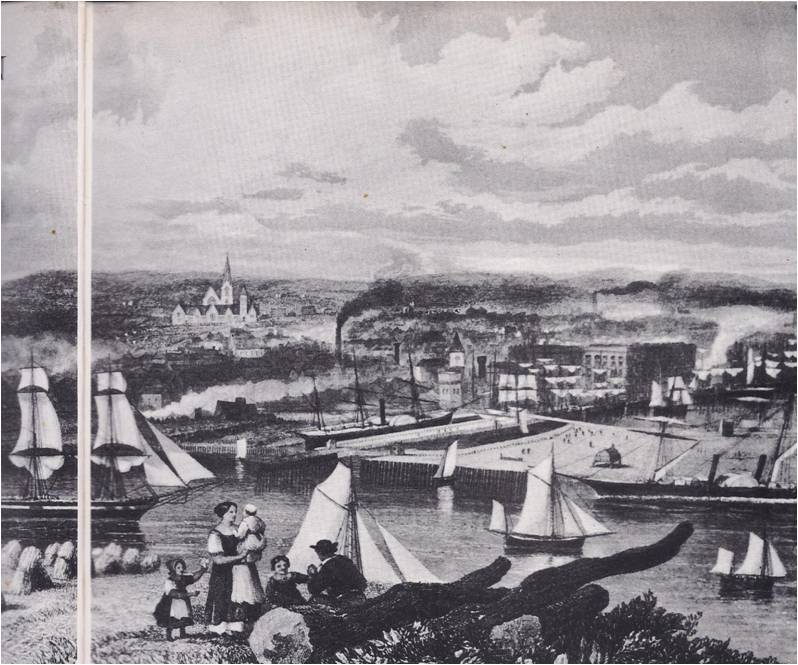
William Cartwright, the owner of one of the largest textile mills in the area, was not easily frightened. He believed in progress and to him progress meant using machines, for they could do the work faster and cheaper than men. Whenever he installed new machinery in his factory, he could lay off a number of employees, save the amount of their salaries and at the same time produce more goods than ever before.
Early in the spring of 1812, he sent two of his wagons to pick up more weaving frames to use in his mill. That night the wagons failed to return at the time he was expecting them. Cartwright waited. He was still waiting hours later, when he heard the distant clatter of wagon wheels. Taking a lantern, he went out, opened the yard gate and watched the huge dray horses pull the wagons into the yard. To his amazement, the drivers were nowhere in sight. He called out, but no one answered. Holding his lantern high, he looked into each of the wagons. Both were empty — he could see no sign of either drivers or weaving frames.
As he unhitched the horses, he noticed a written message fastened to one of the harnesses. It said that his wagons had been captured on Hightown Moor; his weaving machines had been dumped on the moor and smashed to pieces. He would find his drivers lying bound in a ditch by the roadside. This attack was to be taken as a warning from men who were starving, along with their wives and children. He would hear from them again, unless he stopped using machines that did the work of men.
Cartwright knew the message was from members of the secret society who had lost their jobs, or whose wages had been cut because the newly invented spinning and weaving machines made their work less important. Cartwright was sorry that people were going hungry. He did not think it his duty to feed those he had dismissed and he could not afford to keep them on his payroll when they were no longer needed.
THE LUDDITES
The workers blamed Cartwright and the other mill owners for their troubles. They said that the owners had caused hard times and unemployment by bringing in machines. Many months of hunger and suffering had made the workers bitter. They hated the machines that had taken their places and they accused the mill owners of being greedy monsters who were taking in profits at the expense of the workers.
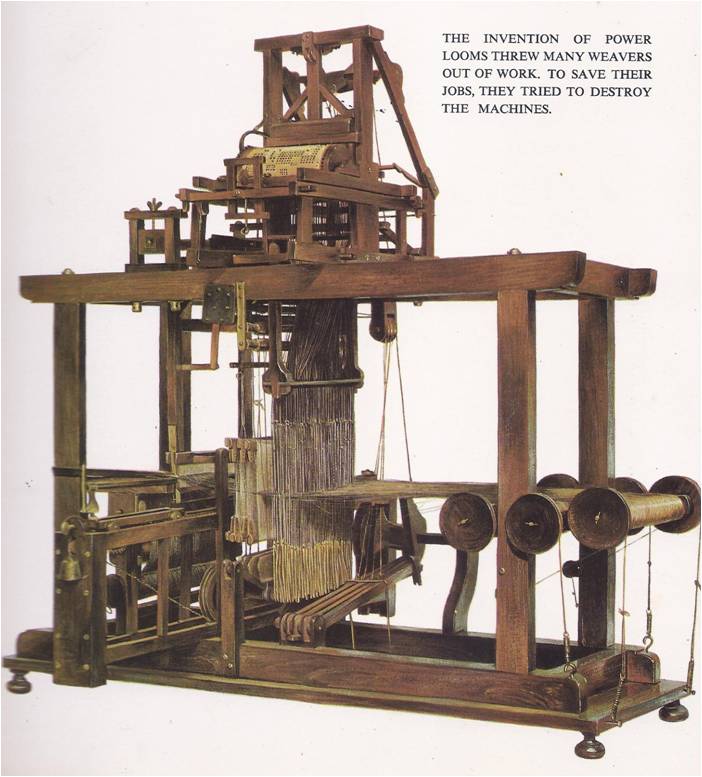
The workers believed that if they destroyed all the machines, the mills would hire them again. So to destroy the machines they had organized a secret society. They called themselves Luddites, in memory of a man named Ned Ludd who had destroyed stocking-knitting machines some thirty years earlier. The Luddites said they would continue to fight for their rights until the House of Commons passed a law forbidding the use of all machines which took jobs away from men.
Cartwright, like other owners of large mills, had a great deal of money invested in machines. He believed that times were changing, that machines would be used more and more, and that mill owners could not hope to succeed unless they made the most of every advance in the manufacture of thread and cloth. To go back to old-fashioned methods of Spinning and weaving by hand would certainly create jobs for most of the unemployed, but it would also greatly increase the cost of manufacturing cloth. What the workers did not seem to understand was that it would be almost impossible to sell the hand-woven cloth. Who would want to buy it when machine made cloth could be bought at a much cheaper price? A mill owner had no choice; he could not stay in business without labour-saving machinery.
Although Cartwright feared another Luddite attack, he continued using his machinery. He sent for more machines to replace the ones destroyed on the moor and appealed to the government for protection against the Luddites.
The British government had received many similar requests from other mill owners in various parts of England. Recently a man named Harsfall, the owner of a large mill in Yorkshire, had been ambushed and killed for saying some harsh things about the Luddites. The Luddites had become so powerful that local authorities could no longer control them. The country people did not want to become involved. They were either afraid of the Luddites or secretly in sympathy with them. The government in London, therefore, quietly took steps to protect the lives and property of its people. One evening after dark, Cartwright was pleasantly surprised by the arrival of a small unit of soldiers to help him protect his mill.
The expected attack on Cartwright’s mill finally took place on the night of April 11, when about 150 Luddites broke through the main gate. Rushing into the mill yard, they threw stones at the dark windows‚ then began chopping at the main door with axes.
Suddenly there was the crack of rifles as soldiers began shooting down at the mob from the windows on the second floor. The poorly armed raiders were taken completely by surprise. Unprepared to battle against soldiers, they quickly ran off, leaving their wounded where they had fallen.
This was one of the government’s first victories over the Luddites. Later, some of its secret agents posed as unemployed workers and joined the organization. They soon gathered enough evidence to send seventeen Luddites to the gallows. It took several years for the government to crush the Luddites, but the problems which they had been trying to solve, the problems of unemployment and low wages, remained.
The Luddites were not the only ones affected by the great change which was taking place in England. The lives of so many people were affected in so many important ways that it was almost as if a revolution had broken out. Indeed, historians would later call this great change the Industrial Revolution. Unlike other revolutions, the Industrial Revolution was not a short, violent period of revolt. It developed by stages over many years. Before it began, most people earned their living from the soil. They worked by hand, or with a few simple tools. Towns and cities were small and since they did little trading with each other, the roads between them were not much more than pack-horse trails.
The Industrial Revolution was brought about by the machine and the factory system of production. By the time this system was well established more than half the people of England were living in towns and cities, which became manufacturing centers. Factories greatly increased production and with increased production came increased trade. Roads were greatly improved, canals were built and shallow rivers were deepened to carry the great flow of raw materials to factories and of manufactured goods to distant markets. The Industrial Revolution brought about many social changes, too and tended to divide the people into classes.
MERCHANTS AND BANKERS
Curiously, the Industrial Revolution had no definite beginning or end. It did not start with a single event, or with some great invention. Some historians date the Industrial Revolution in England from about 1760 to about 1830, because that was the period of greatest change. Other historians date it from 1750 to 1850. Many important developments, such as the invention of the printing press, had taken place even before 1750. By that time, too, men had learned to use wind power and water power and were already using steam power for pumping water out of coal mines.
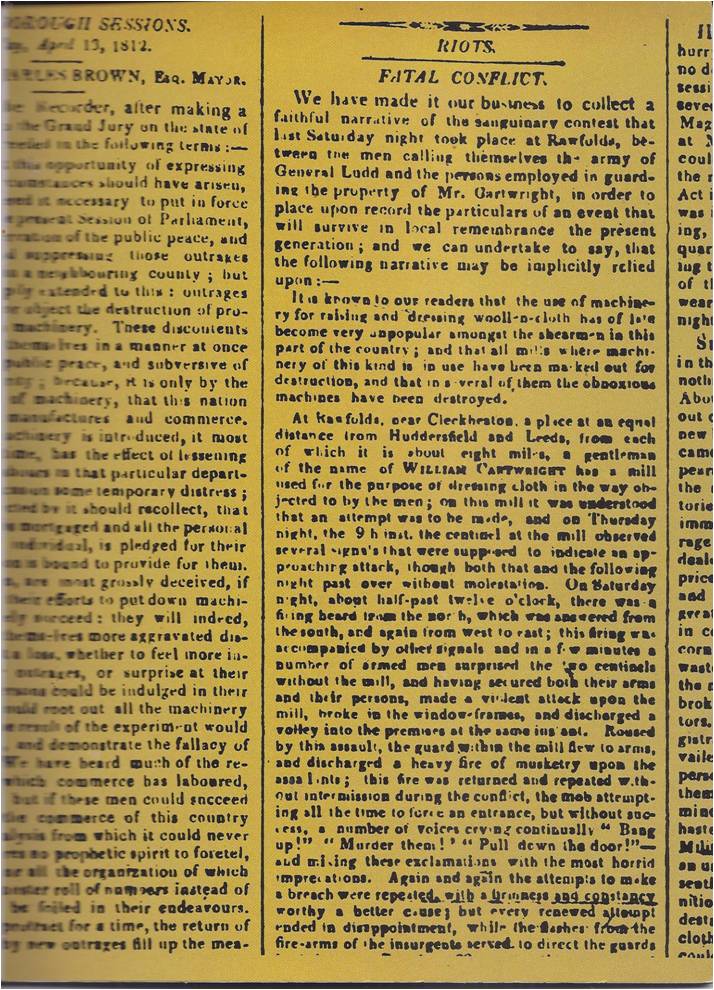
Historians point out that the Industrial Revolution never really came to an end. It spread eastward from England into the countries of Europe and westward to the United States and Canada. Later, during the twentieth century, it swept over Russia and began to reach China. Historians agree, however, that the Industrial Revolution started in England and the reason was that she enjoyed certain advantages over other European nations. As the greatest colonial power on earth, she had raw materials available and markets that were eager to buy what she could produce. She had thousands of skilled spinners and weavers who made cloth by hand in their own homes. England had a banking system which could lend money to businessmen for building factories.
Other European countries had done almost as well, but they often suffered heavy damage in time of war, particularly when they were overrun and occupied by enemy troops. England was an island and was protected by the sea. Since the Norman invasion her villages and towns had never been destroyed or occupied by invading forces.
The English enjoyed good business conditions for so long that many of them were able to put aside some of their earnings. They began searching for ways in which their extra money could be used to make still more money. They were happy to lend it to the government or to trading companies at high rates of interest. As more and more money became available for loans, the interest rate dropped; the low rates encouraged businessmen to borrow money for improvements and to experiment with new ideas and new ways of doing things. They were interested in finding faster and better methods of production, which would give them more of the finished products to sell and therefore greater profits.
The search for improvement also went on in the countryside. For many years the nobles and rich merchants had been buying up land to add to their power and influence. The English looked up to those who owned large amounts of land and considered them the “gentlemen of England.”
Many of them were not pleased with the old fashioned way of farming. They began experiments with new methods of cultivation, hoping to increase their earnings. They drained marshes and turned them into fertile fields. They discovered they could enrich sandy soil by adding clay to it. They found better ways of rotating crops. They introduced the turnip as a field crop and new grasses and clover. They increased their use of fertilizers and invented a drill seeder for planting seed and a hoe that could be drawn over the ground by a horse. They tried to develop larger cattle and fatter sheep.
One of the greatest obstacles standing in the way of the new farming methods was the ancient village system of common lands and open fields. The common lands were the almost worthless portions of land in and near the village. This was usually the poorest land in the area, often a wasteland of sand and weeds and rocks, or a marshy place overgrown with reeds. There all the landowners in the village had a right to pasture their cattle and sheep. There poor people who had no land of their own usually built their huts, without permission from anyone and allowed their cattle to run free. When these people needed wood, they chopped down trees growing on the common lands and for fuel they often helped themselves to peat from the bog.
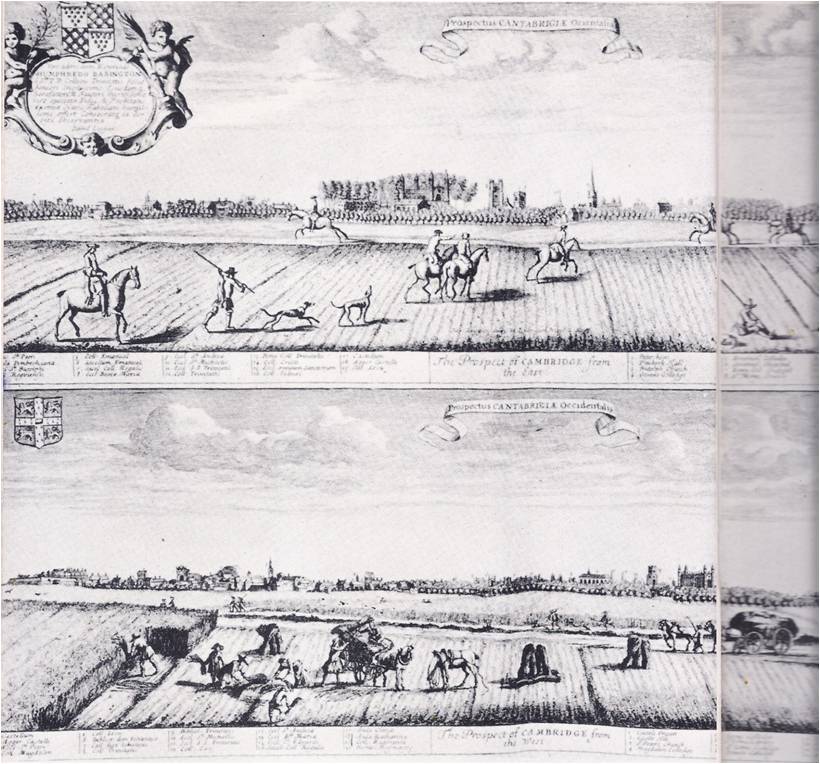
In addition to such wastelands, each village had open fields — large unfenced fields of the best farm land in the area. Almost every landowner in the village owned a piece or two of land in the open fields. Wealthy villagers owned a number of pieces, but they were usually widely scattered among pieces of land owned by others. As a result, there was much confusion as to boundaries and ownership.
It simply was not practical for each owner to mark out his own piece of land and farm it in his own way. For practical reasons, all the land in the open fields was farmed as though it belonged to one person. One year it would be planted with wheat, the next with peas or beans and the third year nothing would be planted, so that the soil would have a chance to rest for a season.
This system of common lands and open fields made it difficult for landowners to test new methods of farming. Such tests could not be made in the open fields without the consent of all the landowners and those who owned just a plot or two were usually against any change that might cost them money. Wealthy landowners could sometimes gain control of open fields by buying up all the land. When small landowners refused to sell, it was possible to get land indirectly by asking Parliament to pass an Act of Enclosure.
Under such an act all the lands in the village, including common wastelands, were turned over to a commission to be divided up and given to the landholders, each receiving his share. In this way even common lands became private property. Each owner was required to fence in his particular piece of property, or enclose it with a hedge.
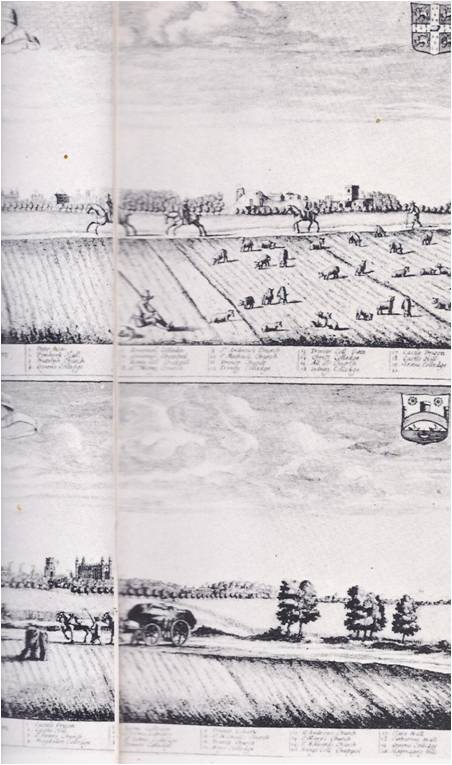
Acts of Enclosure were passed for many villages in England. Most of these acts were passed after 1760 and they affected the lives of the country people in different ways. The big landowners had enough influence to get the best land. Those who owned just a plot or two were likely to end up with a piece of sandy soil, or a reedy marsh that could hardly be used for growing crops. Even small landowners who received fairly good land were usually not willing to go to the expense of fencing their property as required by law. They were happy to sell their land, therefore, to one of the large landowners and to move to nearby towns to work for wages.
Poor people who had built their huts on the commons without permission found themselves living on private property. They had to move out.
NEW METHODS OF FARMING
Under Acts of Enclosure, wealthy landowners established large private farms, introduced improved methods of farming, new crops and greatly increased the production of farm crops. This helped make it possible to support the growing number of industrial workers in the cities. Only a few peasants were needed to work the land and the peasant villages all but disappeared.
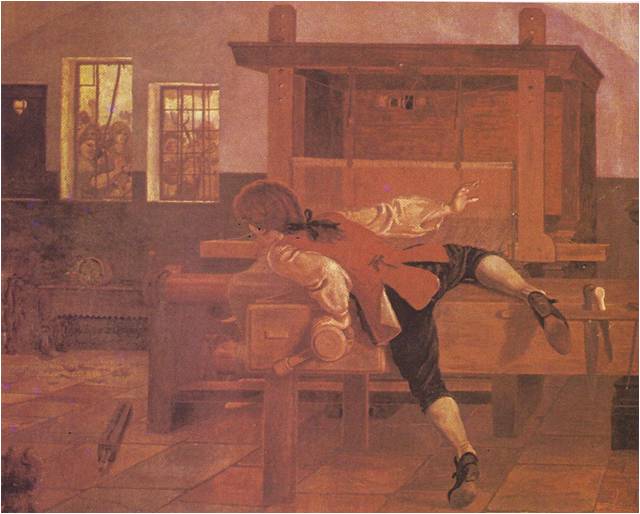
England soon reached the point where she no longer had a large peasant population closely associated with the soil. She had a large floating population of workers who were willing to go wherever they could find jobs and this, too, helped prepare the way for the Industrial Revolution.
Many of the changes that took place during the revolution were brought about by a series of inventions. One of the first of these was the fly shuttle invented by John Kay in 1733. It was an improvement on the weaver’s loom. Before it was invented, two weavers were required to weave a wide piece of cloth‚ one on each side of the loom to toss the shuttle back and forth to each other across the width of the cloth. Kay mounted his shuttle on small roller; so that it would roll back and forth on a wooden rail. One weaver could quickly send it from side to side by pulling a cord that caused wooden hammers to hit it back and forth. The invention increased the speed of weaving and made it possible to weave wider cloth than ever before.
The weavers of Colchester, where Kay introduced his invention, turned against him. They said he was trying to take work away from them with his invention. He went to Leeds, hoping for better treatment there. The Leeds manufacturers were pleased to use his fly shuttle but refused to pay him royalties for its use. When he brought lawsuits against them, they organized and kept fighting him in the courts until he was ruined by heavy court expenses. He returned to his native town of Bury in 1745, but his enemies followed him there. They caused a riot and broke into his house and looted it because he had invented the fly shuttle he was considered a dangerous enemy of hand labour wherever he went. In Manchester he had to escape from the city in a sack of wool. He fled to France. He died penniless, although by 1760 his fly shuttle was in use throughout England.
